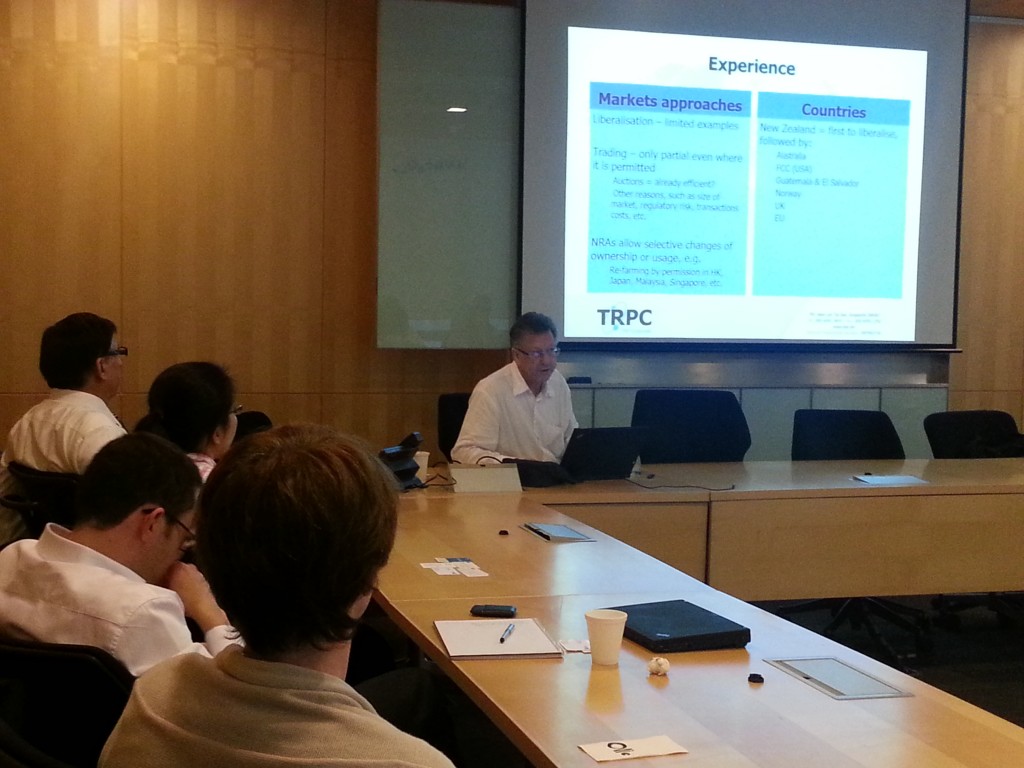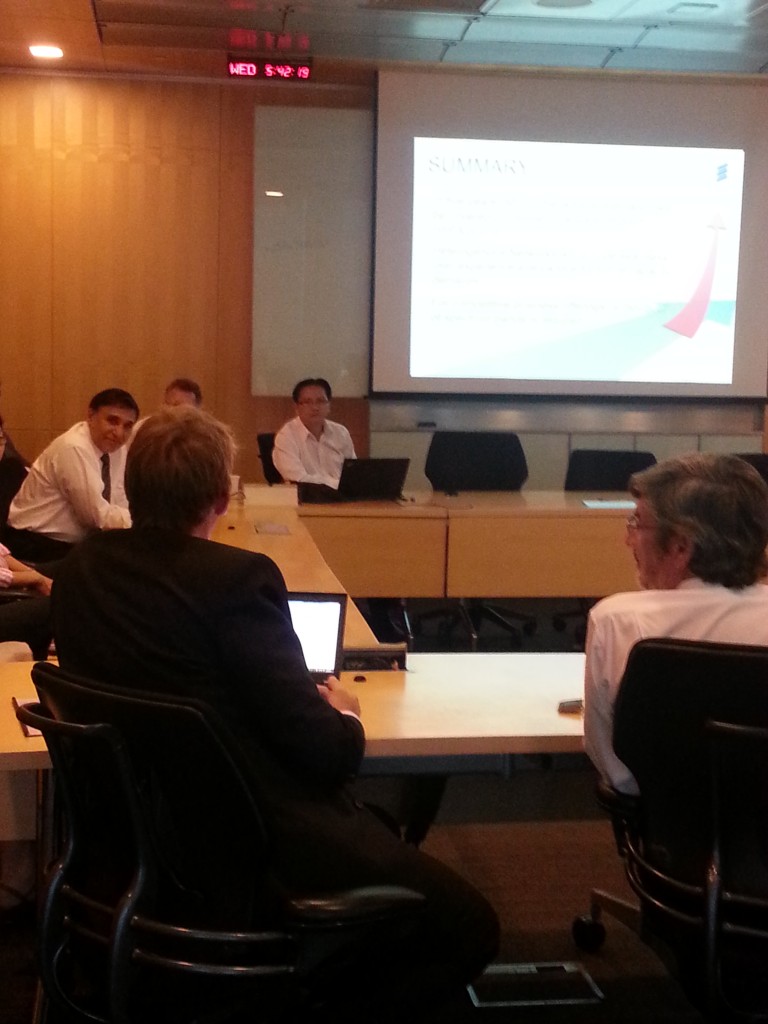

28 Nov 2012, 3.30-6pm @ Microsoft Singapore Level 22, One Marina Blvd, Singapore 018989
[Download the background paper: “Spectrum Policy In Singapore”]
In 2013 the IDA plans a spectrum auction for 4G cellular services in the 1800MHz, 2.3GHz, and 2.5GHz bands. The 700MHz UHF band, part of the digital dividend when analogue TV switches over to digital TV, is not included as negotiations with Malaysia over harmonization are on-going, so what are the implications for future spectrum planning and assignments? What is the vision of the IDA with respect to new entrants and innovation in services?
In the bands below 1GHz there are competing claims. For example, currently Public Protection and Disaster Relief (PPDR) services, such as ambulance, police and fire services are all using narrow-band frequencies. Should they be migrating to broadband and be able to offer real-time video coverage of accidents and disaster? In recent years auctions have been used where demand outstrips supply, and “shadow pricing” or administered pricing, such as opportunity cost approaches, has been adopted for non-contested uses such as PPDR services. But all that could change. Will the new generation of technologies, such as cognitive radio, intelligent antennae and techniques such as frequency aggregation (of frequencies from different parts of the spectrum) encourage a shift towards frequency sharing?
Experiments in spectrum trading in the US and elsewhere already allow utilities, for example, to sub-lease their unused spectrum on a geographical or a time-of-day basis. Is this feasible for Singapore? Singapore is a very small market, so will the design of the auction in 2013 really produce a more competitive and innovative outcome? What should be the goals of the auction and how does the design of an auction influence the outcome? The current system of assignment of frequencies according to rights of exclusive or primary usage maximizes the value of spectrum for the “public good”. In this age of austerity, is the public good the same as good for the treasury, or does it mean ploughing funds back into the industry itself? You are invited to participate in the debate.
- David Abecassis, Senior Manager, AnalysysMason – When and when not to use auctions?
- David Abecassis – A perspective on spectrum auctions
- For more information on the speaker and services from Analysys Mason, follow www.analysysmason.com/What-we-offer/Consulting/#!/Spectrum/Overview
- Koh Li-Na,Covering Director for Infocomm Policy, IDA – Spectrum policy in Singapore: issues and ways forward
- Bhatia Bharat, Regional Director, Asia Pacific Government Affairs, Motorola – The case for broadband spectrum for Public Protection and Disaster Relief (PPDR) radiocommunications services
- Please email: [email protected]/old_archive if you would like a copy of this presentation
- Koh Wee Chew, Ericsson – Radio technologies and the future potential of spectrum management
- John Ure, TRPC – Innovations in spectrum regulations

